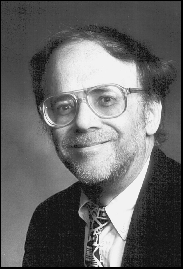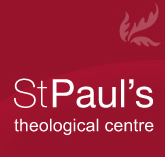Following is the summary of the last chapter of Richard Bauckham’s Jesus and the Eyewitnesses. After that I have two posts planned, the first an attempt at a humble critique of aspects of the book (Part 29), the second a short podcast over viewing the book together with a few other reflections (Part 30).Click here for the (continually updated) series outline
Chapter 18. The Jesus of Testimony (The Final Chapter!)If, as has been argued, the Jesus of the Gospels is the Jesus of eyewitness testimony, then it is necessary to examine the category of testimony further, namely ‘its epistemological status, its role in historiography and its significance as a theological category’.
[1] In a nutshell, Bauckham argues:
‘Testimony ... is both the historically appropriate category for understanding what kind of history the Gospels are and the theologically appropriate category for understanding what kind of access Christian readers of the Gospels thereby have to Jesus and his history. It is the category that enables us to surmount the dichotomy between the so-called historical Jesus and the so-called Christ of faith’.[2]
Drawing on the work of K. Vanhoozer and especially C.A.J. Coady, he notes how depended humans are on testimony in the run of daily life. Furthermore, Coady has shown, against the grain of modern individualistic tendencies, ‘that testimony is as basic a form of knowledge as perception, memory and inference’.
[3] This means that it is necessary to ‘understand our epistemic situation in less exclusively individualistic terms, more in communal or inter-subjective terms’
[4] which involves a fundamental attitude of trust. Testimony invites trust, but not blind uncritical trust. Rather, it is ‘important to appreciate the complex relation between trust and critical appraisal’.
[5]‘The situation is in principle no different than in the case of our individual perceptions, memories and inferences, which we have no choice but to trust fundamentally, while also being aware that they can mislead us and require critical evaluation in suspicious cases. It is only the excessive individualism of the modern western ideology that tempts us to the view that testimony should regularly and generally incur our suspicion, while our own perceptions, memories and inferences should not’.[6]
How does this relate to historical study? While ‘Graeco-Roman historians achieved results that we should not be too ready to suppose a historian equipped with modern historical methods could easily have surpassed’,
[7] it is true that there are significant differences between ancient and modern ways of approaching historical study. Significantly, modern scholars now focus heavily on extracting evidence from the testimony of witnesses
in spite of themselves, which is an important insight (cf. M. Bloch and especially R.G. Collingwood). ‘But’, Bauckham proceeds, ‘we should also note that nothing about modern historical method prohibits us from reading the explicit testimonies of the past for the sake of what they were intended to recount and reveal’
[8] even if some deny that the ‘past voluntarily “gives” the historian anything’.
[9] This is all the more true as this denial tends to lead to the unsustainable assertion that ‘whereas in everyday life we treat testimony as reliable unless or until we find reason to doubt it, in scientific history testimony is suspicious from the outset and can only be believed when it is independently verified’. But at this point ‘it ceases to be testimony’.
[10] Testimony, despite the attitudes of much modern Gospel scholarship, invites to be trusted; comprehensive doubt is impossible.
Turning to Paul Ricoeur (and his major recent work,
Memory, History, Forgetting) who makes ‘testimony as the record of memory indispensable for historiography’,
[11] Bauckham seeks a ‘more adequate philosophical account of historiography than Collingwood’s’.
[12] This leads to the conclusion: ‘In the end, testimony is all we have. For the historian, the testament, as a record of memory, is bedrock’.
[13]Examining in more detail the dialectic of trust and critical assessment of testimony, Bauckham argues that the evaluation is essentially an assessment of whether the testimony is trustworthy or not. In other words, ‘[w]hat is not possible is the independent verification or falsification of everything the testimony relates’.
[14] While archaeological findings, for example, can ‘to a degree corroborate or discredit testimony ... [t]hey cannot replace testimony’.
[15] Furthermore, ‘for the sake of maintaining the quest for the truth of history, we must allow the testimony to resist the limiting pressure of our own experiences and expectations’.
[16]This leads to an analysis of Holocaust testimonies, how this sheds light on Gospel testimony and the argument that ‘testimony can be checked and assessed in appropriate ways, but nevertheless has to be trusted. In the uniquely unique [a phrase adopted from Ricoeur] events we are considering, this is all the more true’.
[17] Testimony can yield truth about the past that nothing else can.
We cannot ‘suppose that we can extract individual facts from testimony and build our own reconstruction of events that is no longer dependent on witness’.
[18]The traditions in the Synoptic Gospels are, despite being close to how the eyewitnesses told them, actually told by others. However, the extra interpretive element this adds ‘does not come in between us and the realistic character of the story, as interpretation can. The authenticity of the eyewitness memory, if that is what it is, is not compromised or obscured by literary contrivance’.
[19] Nevertheless, Bauckham argues that the distinction between ‘plain narratives and narratives that embody interpretation through literary devices such as intertextual allusions’ may help us to better understand the differences ‘between the narratives of the crucifixion and those of the resurrection’.
[20]‘For all the ingenuity of scholars ... [the resurrection] stories remain strangely sui generis and lacking theological interpretation. None of the standard Jewish formulae or images of resurrection occur. We seem to be shown the extraordinary novum, the otherness of resurrection, through the eyes of those whose ordinary reality it invaded’.[21]
Where does all of this lead us? ‘Reading the Gospels as eyewitness testimony’ Bauckham argues, ‘differs therefore from attempts at historical reconstruction behind the texts. It takes the Gospels seriously as they are; it acknowledges the uniqueness of what we can know only in this testimonial form ... This does not mean that historians must trust testimony uncritically, but rather that testimony is to be assessed
as testimony’.
[22] Especially in terms of some ‘uniquely unique’ events, testimony
discloses something and ‘disclosure is what makes the category of testimony not only the appropriate one for the kind of history the Gospels are, but also the theologically appropriate one for understanding the Gospels’.
[23]‘In summary, if the interests of Christian faith and theology in the Jesus who really lived are to recognize the disclosure of God in this history of Jesus, then testimony is the theologically appropriate, indeed the theologically necessary way of access to the history of Jesus, just as testimony is also the historically appropriate, indeed the historically necessary way of access to this “uniquely unique” historical event. It is in the Jesus of testimony that history and theology meet’.[24]
[1]. Ibid., 472–73. [2]. Ibid., 473. [3]. Ibid., 475. [4]. Ibid., 477. [5]. Citing Coady (Bauckham, Eyewitnesses, 478). [6]. Bauckham, Eyewitnesses, 478–79. [7]. Ibid., 480. [8]. Ibid., 483. [9]. Ibid., 484. [10]. Ibid., 485. [11]. Ibid., 488. [12]. Ibid., 487. [13]. Ibid., 489. [14]. Ibid., 490. [15]. Ibid. [16]. Ibid., 492. [17]. Ibid., 502. [18]. Ibid. [19]. Ibid., 504. [20]. Ibid. [21]. Ibid., 505. [22]. Ibid., 506. [23]. Ibid., 507. [24]. Ibid., 508.Labels: Book Review, Jesus and the Eyewitnesses
























